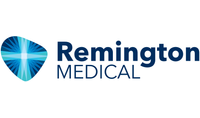


Remington - Explaining Medical Device Traceability
To ensure the safety of patients is a top priority, manufacturers and healthcare providers must have systems in place regarding tracking devices for hospital equipment.
Medical device traceability ensures that medical devices and the materials they’re manufactured with can be tracked from prototyping and manufacturing to end-use in a healthcare setting. The goal is to improve patient care and safety by helping reduce the risk of counterfeit or faulty products entering the supply chain. Traceability also helps healthcare providers act quickly and efficiently in the event of a recall or other issues.
There are several different types of regulations that apply to different regions, countries, and manufacturers. In general, they govern how companies should label their products, as well as processes for serializing devices so they can be easily identified.
The U.S. has its own set of medical device traceability requirements known as Unique Device Identification (UDI) regulations, which require class I and unclassified medical devices marketed in the U.S. to have a unique identifier (barcode or RFID tag) that can help link the device back to the manufacturer of record and other information about its production history.
According to the FDA, their staff has discretion to order manufacturers to initiate a program to track their devices down to the patient level. The types subject to a tracking order include any Class II or Class III device that may:
- Have serious adverse health consequences;
- Be implanted in the human body for more than one year; or
- Be intended to be a life sustaining or life supporting device used outside a device user facility.
The FDA states that manufacturers who receive a tracking order are required to establish a written standard operating procedure (SOP) with details regarding a method for following the device throughout distribution and a quality assurance program that includes auditing procedures.
Is your medical device becoming outdated? It may be time to update your design to improve its functionality and usability so it remains profitable.
The FDA has issued tracking orders to manufacturers of the following devices:
- An automated, external, and wearable defibrillator
- A permanent pacemaker, its battery, pulse generator, and lead adapter
- A mechanical heart valve
- A non-life-supporting, continuous ventilator
